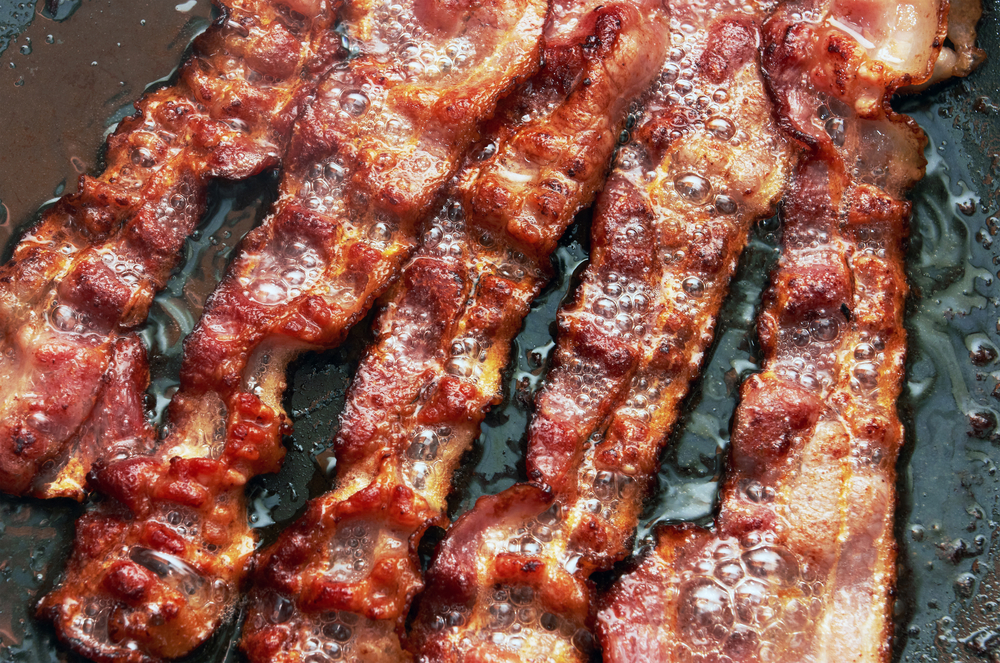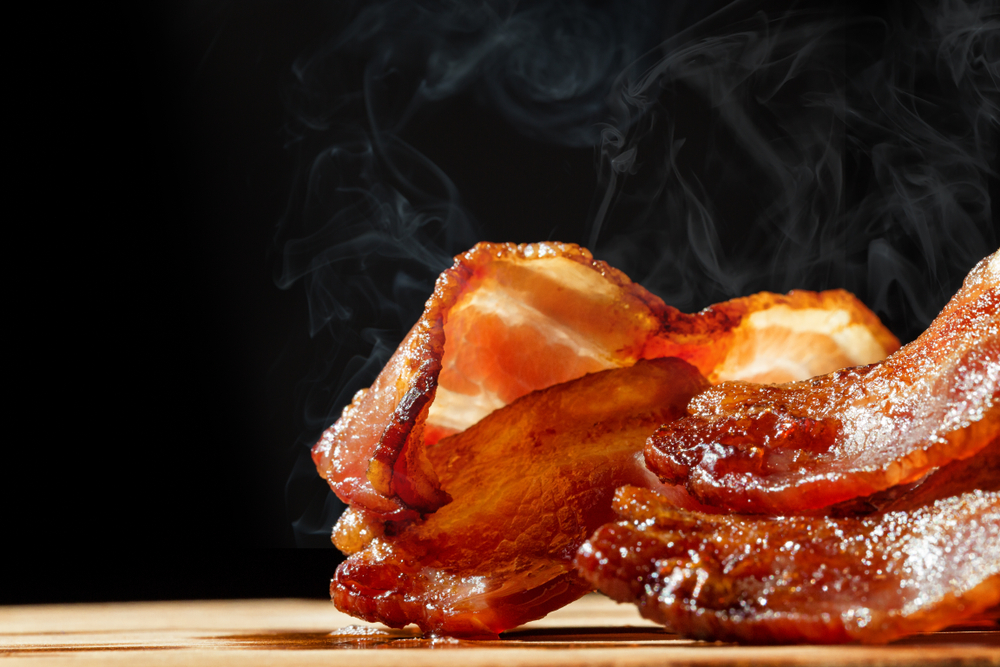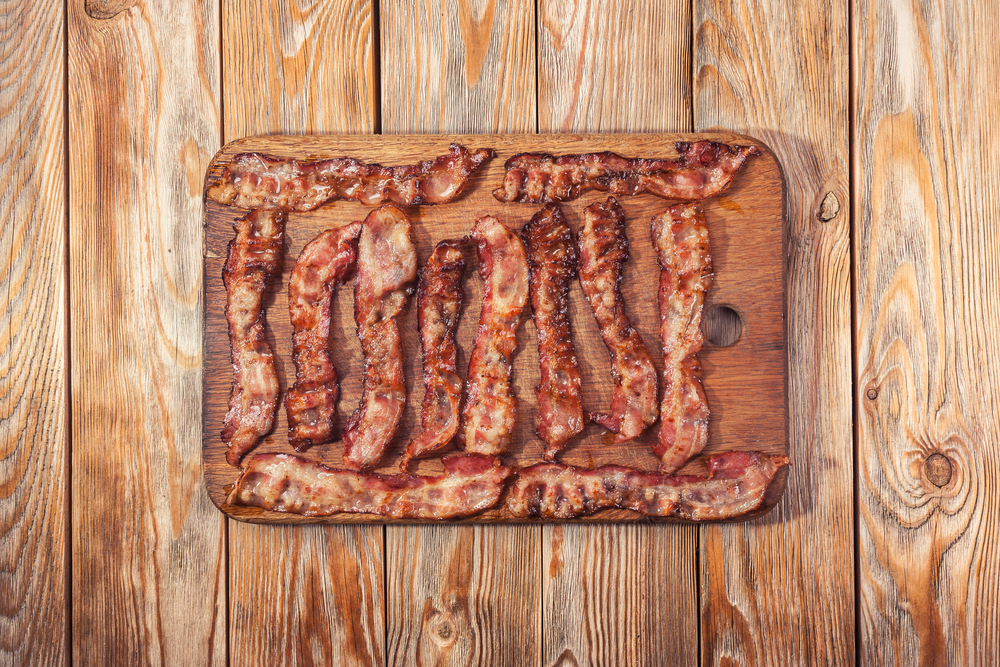I love eggs benedict, but making it fresh every time can be time-consuming and tiring. That’s why reheating eggs benedict is a great option for those who want to enjoy this delicious breakfast dish without the hassle of cooking from scratch.
In this article, I will share the best ways to reheat eggs benedict to ensure that it tastes as good as it did when you first cooked it.

Understanding Eggs Benedict is crucial before reheating it. This classic breakfast dish consists of an English muffin, Canadian bacon, poached eggs, and hollandaise sauce.
Each component needs to be prepared and assembled correctly to create a perfect eggs benedict. However, storing and reheating eggs benedict can be tricky, and if not done right, it can become a soggy mess.
That’s why it’s essential to know the right methods to reheat eggs benedict to maintain its texture and flavor.
Methods of Reheating Eggs Benedict vary, and each has its pros and cons. Some methods, such as microwaving, are quick and easy, while others, such as using a stovetop or oven, take more time and effort.
However, each method has its benefits, and the choice depends on personal preference and the equipment available.
In the following sections, I will discuss each method in detail and provide step-by-step instructions to ensure that your reheated eggs benedict tastes as good as freshly made.
Key Takeaways
- Eggs benedict is a classic breakfast dish that consists of an English muffin, Canadian bacon, poached eggs, and hollandaise sauce.
- Reheating eggs benedict can be tricky, and it’s essential to know the right methods to maintain its texture and flavor.
- The best methods for reheating eggs benedict include using a stovetop, oven, or microwave, and the choice depends on personal preference and equipment available.
Understanding Eggs Benedict
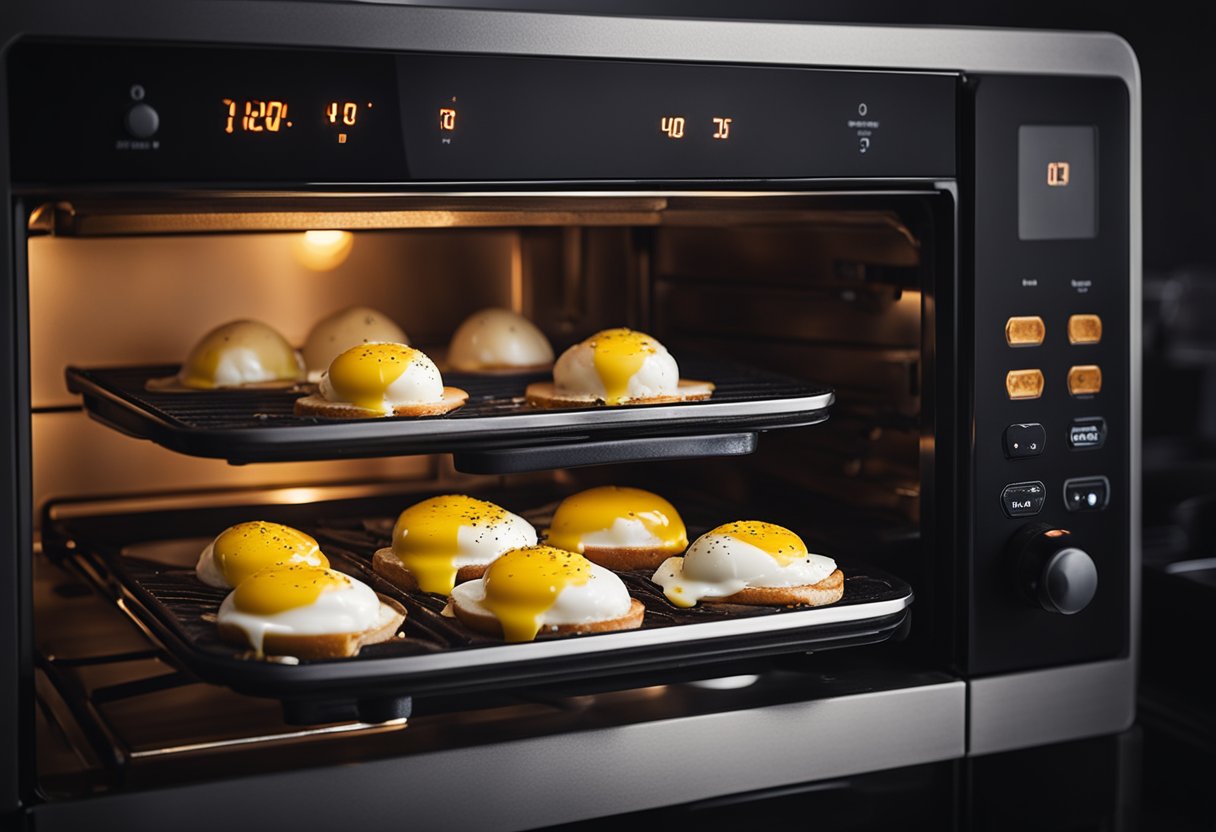
Eggs Benedict is a classic breakfast dish that consists of poached eggs, Canadian bacon or ham, and hollandaise sauce served over an English muffin. It is a delicious and satisfying dish that is perfect for brunch or breakfast.
The dish is believed to have originated in New York City in the late 1800s, and it has since become a popular dish in restaurants all over the world.
Eggs Benedict is a dish that requires some skill to make, but with a little practice, anyone can master it.
The basic components of Eggs Benedict are poached eggs, English muffin, and hollandaise sauce. The poached eggs are usually cooked until the whites are set and the yolks are still runny.
The English muffin is toasted and serves as the base for the dish. The hollandaise sauce is a rich and creamy sauce made from egg yolks, butter, and lemon juice.
There are many variations of Eggs Benedict that include different ingredients such as spinach, tomato, and ham. Some people even use smoked salmon or crab meat instead of Canadian bacon or ham.
To make Eggs Benedict, start by toasting the English muffin and cooking the Canadian bacon or ham. Then, poach the eggs until they are cooked to your desired level of doneness.
Finally, make the hollandaise sauce by whisking together egg yolks, lemon juice, and melted butter.
When serving Eggs Benedict, it is important to assemble the dish quickly so that the eggs and hollandaise sauce do not cool down too much.
Place the English muffin on a plate, top it with the Canadian bacon or ham, then add the poached eggs on top. Finally, pour the hollandaise sauce over the eggs and serve immediately.
Overall, Eggs Benedict is a delicious and sophisticated breakfast dish that is perfect for special occasions or lazy weekend mornings.
With a little practice, anyone can master the art of making Eggs Benedict and impress their friends and family with this classic dish.
Storing and Preparing for Reheating

As someone who loves eggs benedict, I know that it can be a tricky dish to reheat. However, with a few simple tips, you can make sure that your leftover egg benedict tastes just as good as it did when it was freshly made.
Firstly, when you have leftover eggs benedict, you should store it in the refrigerator as soon as possible.
This will help to prevent any bacteria from growing on the dish and keep it fresh for longer. You can store the egg benedict in an airtight container or wrap it tightly in plastic wrap.
Before reheating, you should take the egg benedict out of the refrigerator and let it come to room temperature. This will help to ensure that it heats evenly and doesn’t become overcooked.
If you want to speed up the process, you can place the container with the egg benedict in a bowl of cold, salted water for a few minutes.
When it comes to reheating, there are a few different methods that you can use. One option is to reheat the egg benedict in the microwave.
To do this, you should place the dish in the microwave and heat on high for one minute or until warm. Be careful not to overcook the eggs, as this will make them dry and rubbery.
Another option is to reheat the egg benedict in the oven. To do this, you should preheat your oven to 350 degrees Fahrenheit and place the egg benedict in an oven-safe dish.
Cover the dish with aluminum foil and bake until the dish is heated through, which will take about 20-30 minutes.
Overall, by following these simple tips, you can ensure that your leftover eggs benedict is just as delicious as when it was freshly made.
Methods of Reheating Eggs Benedict
When it comes to reheating Eggs Benedict, there are a few methods you can use to ensure that the dish is heated through and still tastes delicious. Here are three popular methods of reheating Eggs Benedict:
Reheating in the Oven
One effective way to reheat Eggs Benedict is in the oven. This method is great for reheating multiple servings at once and ensures even heating. To reheat Eggs Benedict in the oven, follow these steps:
- Preheat your oven to 350°F.
- Place the Eggs Benedict on a baking sheet and cover with foil to prevent moisture loss.
- Heat the Eggs Benedict in the oven for 10-15 minutes or until heated through.
Reheating on the Stovetop
Another way to reheat Eggs Benedict is on the stovetop. This method is great for reheating single servings and allows you to control the temperature and moisture level.
To reheat Eggs Benedict on the stovetop, follow these steps:
- Place the Eggs Benedict in a skillet and add a tablespoon of water to prevent drying out.
- Cover the skillet with a lid and heat over low heat until the Eggs Benedict is heated through, about 5-7 minutes.
Reheating in the Microwave
If you’re short on time, you can also reheat Eggs Benedict in the microwave. This method is quick and easy, but be careful not to overcook the dish or curdle the hollandaise sauce.
To reheat Eggs Benedict in the microwave, follow these steps:
- Place the Eggs Benedict on a microwave-safe plate and cover with a damp paper towel to prevent moisture loss.
- Microwave on high for 30 seconds to 1 minute or until heated through.
Keep in mind that reheating Eggs Benedict can be tricky, as the hollandaise sauce can easily curdle and the dish can dry out or overcook.
By using the methods above and paying attention to the temperature and moisture level, you can enjoy a delicious reheated Eggs Benedict.
Reassembling and Serving

Now that your Eggs Benedict is reheated, it’s time to reassemble and serve it.
First, place the toasted English muffin on a plate and spread some butter on it. Then, add the heated ham or bacon on top of the muffin.
Next, carefully place the reheated poached egg on top of the ham or bacon. Make sure to use a slotted spoon to avoid excess water.
To add some flavor and texture, pour the reheated hollandaise sauce over the poached egg. If you want to get creative, you can try different variations of hollandaise sauce with different flavors.
To garnish, sprinkle some chopped parsley or chives on top of the hollandaise sauce. You can also add some tomato slices or hot pepper rings for some extra flavor.
Serve immediately while the dish is still warm and enjoy your delicious reheated Eggs Benedict!
Additional Tips and Tricks

When it comes to reheating Eggs Benedict, there are a few additional tips and tricks that can help you achieve the best results.
- Use a double boiler to reheat the hollandaise sauce. This will ensure that the sauce doesn’t separate or curdle. If you don’t have a double boiler, you can use a heatproof bowl set over a pot of simmering water.
- If you’re making hollandaise sauce from scratch, consider using a blender to make the process easier and quicker. Simply blend egg yolks, lemon juice, and melted butter until smooth and creamy.
- When poaching eggs, add a splash of vinegar to the water. This will help the egg whites coagulate more quickly, resulting in a neater and more compact egg.
- Use a slotted spoon to remove the poached eggs from the water. This will help drain excess water and prevent the eggs from becoming soggy.
- If you’re making Eggs Benedict with avocado, make sure to use ripe avocados that are slightly soft to the touch. To separate the avocado flesh from the skin, cut the avocado in half lengthwise, twist the two halves in opposite directions, and gently remove the pit with a spoon.
- If you want to make Eggs Benedict ahead of time, you can prepare the hollandaise sauce and poached eggs in advance and store them in the fridge. When you’re ready to serve, simply reheat the hollandaise sauce and poached eggs and assemble the dish with toasted English muffins, Canadian bacon, and any other toppings you like.
- If you want to switch things up, you can try making Eggs Benedict with smoked salmon, asparagus, crab cakes, or even French toast instead of English muffins. The possibilities are endless!
By following these tips and tricks, you can enjoy perfectly reheated Eggs Benedict every time.
Frequently Asked Questions
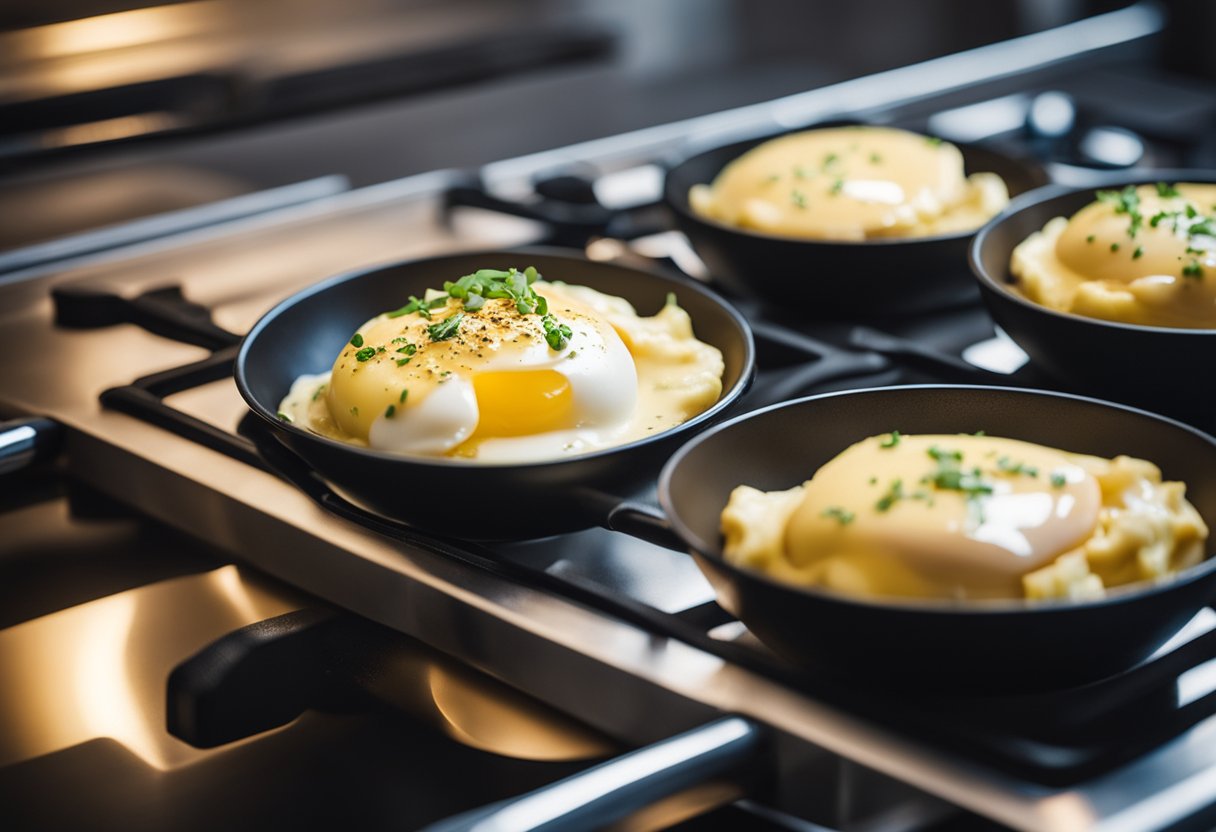
What is the best way to reheat Eggs Benedict?
The best way to reheat Eggs Benedict is to use an oven or stovetop. According to Valuable Kitchen, preheat your oven to 350 degrees Fahrenheit, place your Egg Benedict in an oven-safe dish, cover it with aluminum foil, and bake until it is heated through.
This will take about 20-30 minutes. Alternatively, you can place the Egg Benedict in a saucepan with simmering water and cover it with a lid. Allow it to warm up for approximately 3-4 minutes, as suggested by Reheated.
How can I prevent Hollandaise sauce from splitting when reheating?
To prevent Hollandaise sauce from splitting when reheating, you can add a small amount of water or lemon juice to the sauce before reheating it.
This will help to thin out the sauce and prevent it from separating. Additionally, you can try reheating the sauce using a double boiler, as suggested by Eat Delights.
Is it safe to reheat leftover Eggs Benedict?
Yes, it is safe to reheat leftover Eggs Benedict as long as it has been stored properly and reheated to the appropriate temperature.
According to Mashed, leftover Eggs Benedict can last in the fridge for up to three days. Make sure to reheat it to an internal temperature of 165 degrees Fahrenheit to ensure that it is safe to eat.
What is the recommended method for reheating pre-cooked poached eggs?
The recommended method for reheating pre-cooked poached eggs is to place them in a saucepan with simmering water and cover the pan with a lid.
Allow them to warm up for approximately 3-4 minutes, as suggested by Reheated. Make sure to remove the eggs from the water as soon as they are heated through to prevent them from overcooking.
Can sunny side up eggs be reheated?
It is not recommended to reheat sunny side up eggs as they are likely to overcook and become rubbery. Instead, it is best to cook them fresh when needed.
Are there any tips for reheating fast food eggs without drying them out?
To reheat fast food eggs without drying them out, you can try placing a damp paper towel over the eggs before microwaving them.
This will help to prevent them from becoming dry and rubbery. Additionally, you can try reheating them in a saucepan with a small amount of butter or oil to help keep them moist and flavorful.




